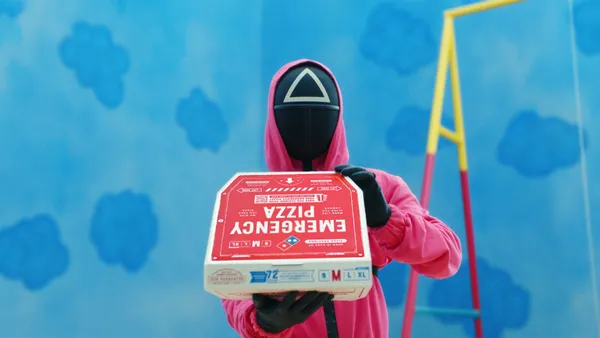Dive Brief:
- WPP saw revenue decline 1.4% year-over-year in Q1, in line with expectations, according to an earnings statement.
- Like-for-like (LFL) revenue less pass-through costs, another measure of growth for the agency network, was down 1.6% YoY. Weakness in China, the tech sector and creative, as well as the loss of some major accounts including Pfizer, contributed to the slowdown.
- The group reiterated its full-year guidance of either flat or 1% growth as measured in LFL revenue less pass-through costs. Like its peers, WPP is betting heavily on generative artificial intelligence (AI) to shore up a positioning around innovation.
Dive Insight:
WPP lagged among the Big Four ad-holding groups in Q1. The GroupM and Ogilvy owner did not benefit from a tech rebound that has buoyed rivals as the business was impacted by pullbacks in key markets, continued struggles on the creative front and the loss of some large clients. China revenues dropped 15.4% during the quarter while North America was down 5.2%, with the latter’s slide attributed to weak tech spending and the Pfizer account change.
The results were in line with the company’s expectations and its 2024 guidance remains the same. But WPP preparing for a year of flat or anemic growth is noteworthy during a period where the ad market is generally on the upswing and competitors are expressing newfound optimism following a fallow 2022-23.
“We remain on track to return to growth in the balance of the year, supported by an encouraging new business pipeline and the strength of our business creatively and in media, both powered by new AI capabilities, while our simpler structure will drive organisational flexibility and stronger cash conversion,” said WPP CEO Mark Read in a statement.
Q1 brought some wins to WPP that could bolster the bottom line, including new assignments from AstraZeneca, Molson Coors and Nestlé. Net-new billings in Q1 stood at $800 million, down from $1.5 billion during the year-ago period.
Amid a push for cost savings, WPP has again moved to simplify its sprawling global network. In October, it merged creative agencies Wunderman Thompson and VMLY&R to create VML. It started the year by bringing together comms shops BCW and Hill & Knowlton to form Burson and has made efforts to further streamline GroupM, its top media agency. GroupM saw growth up 2.4% in Q1 while integrated creative agencies were down 3.3%.
“Structurally, VML is now well established and is on track to deliver savings. GroupM is progressing well with its simplification and Burson will be operational in July” said Read in the earnings report. “I’m very pleased with the progress we are making and we are already seeing the benefits of a simpler and more agile structure for our clients.”
Generative AI is also playing a big role in WPP’s transformation strategy, a common narrative in the agency category. The group earlier in April announced it would integrate Google’s cutting-edge Gemini models into its Open operating system that has been adopted by 50,000 employees. WPP in the announcement credited recent Nestlé media account wins to AI. The company is also working with leading chipmaker Nvidia to develop a creative engine powered by the emergent technology.















